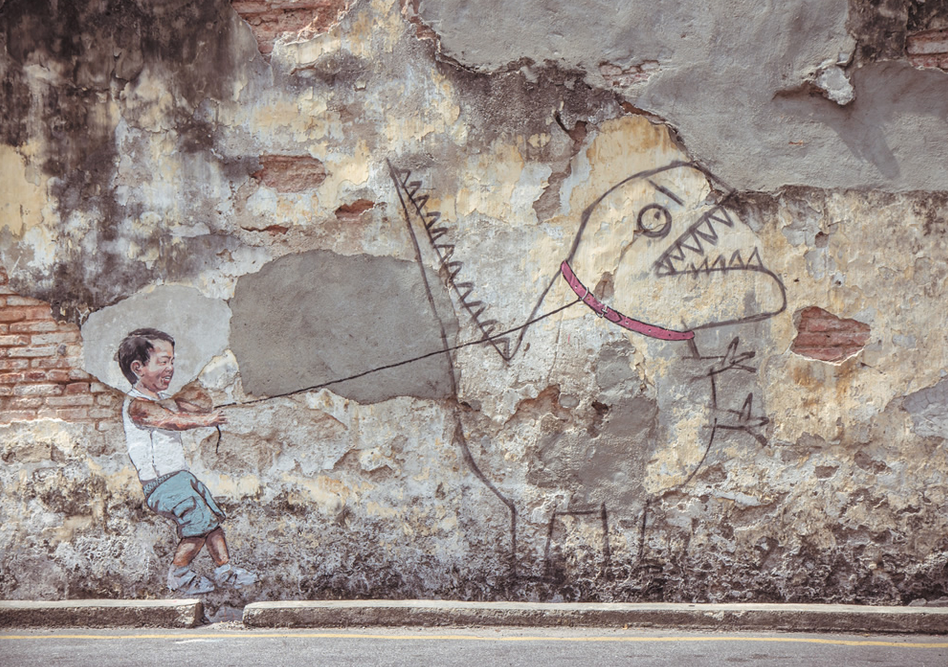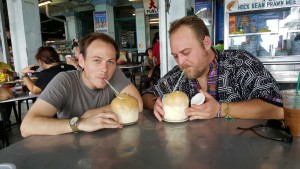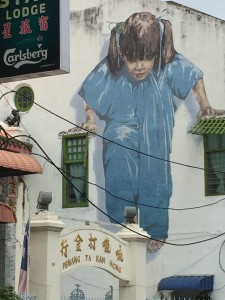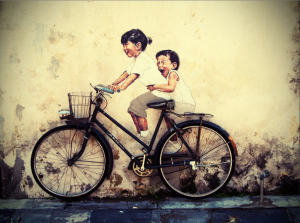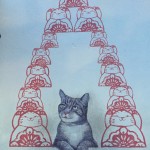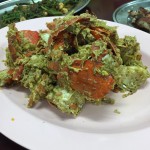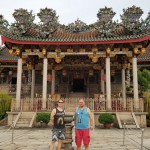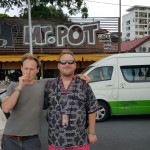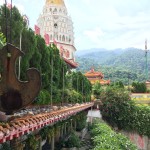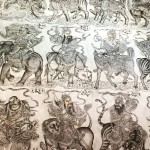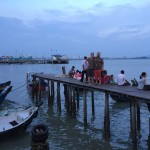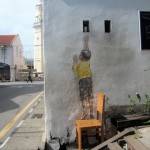Following our short visit to Tokyo for the All Japan Show, Joe and I continued our journey in the Orient by way of Penang, Malaysia, an island off the country’s northwest coast near the Straight of Malacca. The reason for this several day stop in Penang was personal, it is the home town of my girlfriend, Janice, whose parents I was meeting for the first time. Joe reluctantly agreed to join me on this adventure because I promised that we could also spend some time scuba diving, a blog post highlighting our scuba adventures will appear on this site soon.
Penang, is a hot, bustling island most of the year. Since the 18th century, it has had a rich history as a British colonial port, and trading has brought much diversity to the area, with roughly half the population being descendants of Chinese immigrants and the other half split between Malay people and Indians. The gap between rich and poor is also quite apparent. As we walked from our hotel along the shore to get breakfast, Janice pointed out to Joe and I that the apartments and luxury condos inside the brand new high rise buildings that towered above us were several million dollars a piece to buy. Several dark-skinned laborers, most of whom are recent immigrants from India and Bangladesh sat in the shadows of these buildings smoking cigarettes, waiting, I imagine to get picked up for a manual labor job. As we spent most of the day inside an air conditioned mall that sported luxury brands from the US and Europe, we could see that many people who worked at these malls could not afford any of the products on the shelves. It was plain to see that there is a large gap between the rich and poor in Penang.

Joe P scans the view from Kek Lok Si Temple in Penang
As the post WWII economy of Penang grew rapidly, so too did the cost of housing. High rise apartment buildings and luxury developments forced many of the city’s low-income population who lived in the historic parts of town to move to cheaper areas of the island. In response to this devastating trend, in 2008, UNESCO declared George Town, the historic center of Penang, to be a World Heritage Site for having “a unique architectural and cultural townscape without parallel anywhere in East and Southeast Asia.” The goal was to conserve the historic identity of the island which is exhibited in the ordinary life and culture of the working class people who were being forced out by the new money from the banking and tech industries.
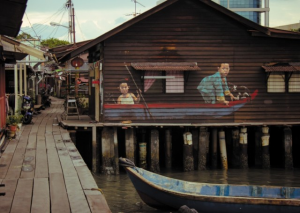 As part of the George Town Festival in 2012, a young Lithuanian street artist, Ernest Zacharevic, was commissioned by the city to paint six murals on historical buildings in an effort to highlight local life there. What made these murals particularly interesting to me was the inclusion of mixed media elements into the mural. For instance, the most famous of the 2012 murals is of a young girl and boy riding a bicycle. While the subjects of the mural are painted, the bicycle is real and fixed to the wall permanently.
As part of the George Town Festival in 2012, a young Lithuanian street artist, Ernest Zacharevic, was commissioned by the city to paint six murals on historical buildings in an effort to highlight local life there. What made these murals particularly interesting to me was the inclusion of mixed media elements into the mural. For instance, the most famous of the 2012 murals is of a young girl and boy riding a bicycle. While the subjects of the mural are painted, the bicycle is real and fixed to the wall permanently.
One might think that if a town wanted to celebrate its history, they would commission jaw-dropping work that would most certainly become a landmark. While they aren’t tremendously impressive paintings in terms of their size or complexity, they are stunning because they glorify working class life in Penang. Another question that comes to mind is why the city would hire an outsider to paint the walls of an historic city and not a local. But, Zacharevic’s take on local culture is certainly relevant because over the last three years it has come to be adopted by both locals and tourists as work iconic of Penang. As Joe, Janice and I observed the bicycle mural in the setting sun, a line of people formed to take their picture with the mural; Zacharevic’s work certainly has certainly succeeded in becoming a town landmark.

